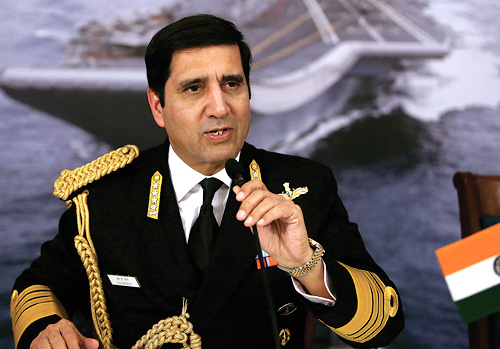INDIAN ARMED FORCES CHIEFS ON
OUR RELENTLESS AND FOCUSED PUBLISHING EFFORTS

SP Guide Publications puts forth a well compiled articulation of issues, pursuits and accomplishments of the Indian Army, over the years

I am confident that SP Guide Publications would continue to inform, inspire and influence.

My compliments to SP Guide Publications for informative and credible reportage on contemporary aerospace issues over the past six decades.
- Admiral Dinesh K. Tripathi assumes Command of the Indian Navy as 26th Chief of the Naval Staff
- Prime Minister witnesses 'Bharat Shakti' – a Tri-Services Firing and Manoeuvre Exercise in Pokhran, Rajasthan
- Interim Defence Budget 2024-25 — An Analysis
- Union Defence budget 2024
- Prime Minister Modi Commemorates Indian Navy Day in a Grand Ceremony
- Prime Minister Modi Flies in the LCA Tejas
- New Chapter in India-Italy Defence Ties
- Airpower beyond Boundaries
'Indian Navy is on the threshold of transformation through continuous consolidation of its capabilities through indigenisation'

During the annual Navy Day press conference on December 3, 2015, Admiral R.K. Dhowan, Chief of the Naval Staff, addressed a host of issues including the operational readiness of the Indian Navy, infrastructure development, human resources management, coastal security, cyber security, foreign cooperation initiatives, joint exercises, etc.
He reiterated that the Indian Ocean has emerged as the world’s centre of gravity as 80 per cent of the oil and trade that emanates from the Indian Ocean region (IOR) is extra-regional in nature. This implies that any impediments to the free movement of oil or trade through IOR will have an impact not just on the economies of the region, but the global economy as well. The Indian Navy which is the world’s fifth largest navy, has onerous responsibilities to be the net security provider in the maritime domain of interest to India. The Indian Navy is empowering India with maritime security to safeguard its assets employed for the economic growth of the country. The Indian Navy is on the threshold of transformation through continuous consolidation of its capabilities through indigenisation. The blueprint of the Indian Navy is firmly anchored on self-reliance and indigenisation. Towards this objective science and technology road map and infrastructure plans to meet the futuristic requirements have been promulgated and disseminated widely to the indigenous industry for its greater participation. This vision is directly in line with the ‘Make in India’ initiative of the Prime Minister Narendra Modi.
With the aim to showcase the Indian Navy, foster a better understanding of the navies of the world and share best operational practices, the International Fleet Review is scheduled at Visakhapatnam in February 2016. A scintillating video clipping on the forthcoming prestigious event was showcased for the audience. This was followed by yet another video clipping demonstrating the annual round-up of the Indian Navy and its growing prowess.
He highlighted measures initiated in maintaining a high tempo of operations with Indian Navy ships deployed at extended ranges from Indian coasts, spanning from the South China Sea and Sea of Japan in the east to the Persian Gulf and the Atlantic Ocean in the west and at the same time remaining focused on maritime and coastal security in close liaison with other national authorities and agencies. He also highlighted that transformation has taken place with the induction of MiG-29K, Boeing P-8I, Vikramaditya, newer and powerful surface and subsurface platform participating in networked theatre level operational readiness exercise networked through dedicated naval satellite Rukmini.
He also gave a detailed resume on the measures initiated and progress made towards providing seamless coastal security. 87 Automatic Identification System stations have been networked to provide data through 46 coastal radar stations. Regular coastal security exercises have been conducted networked through 51 nodes of IMAC at Gurgaon.





